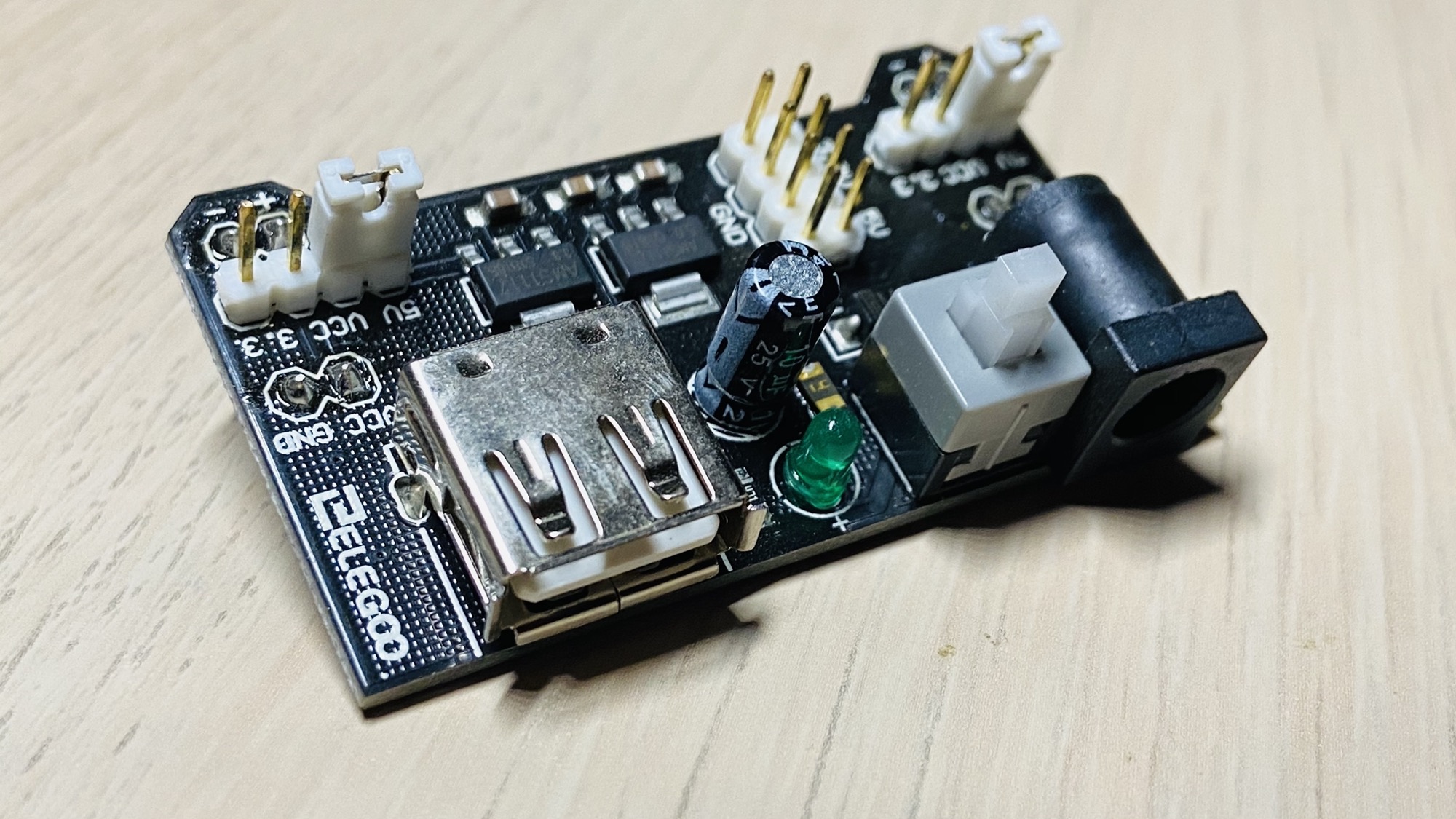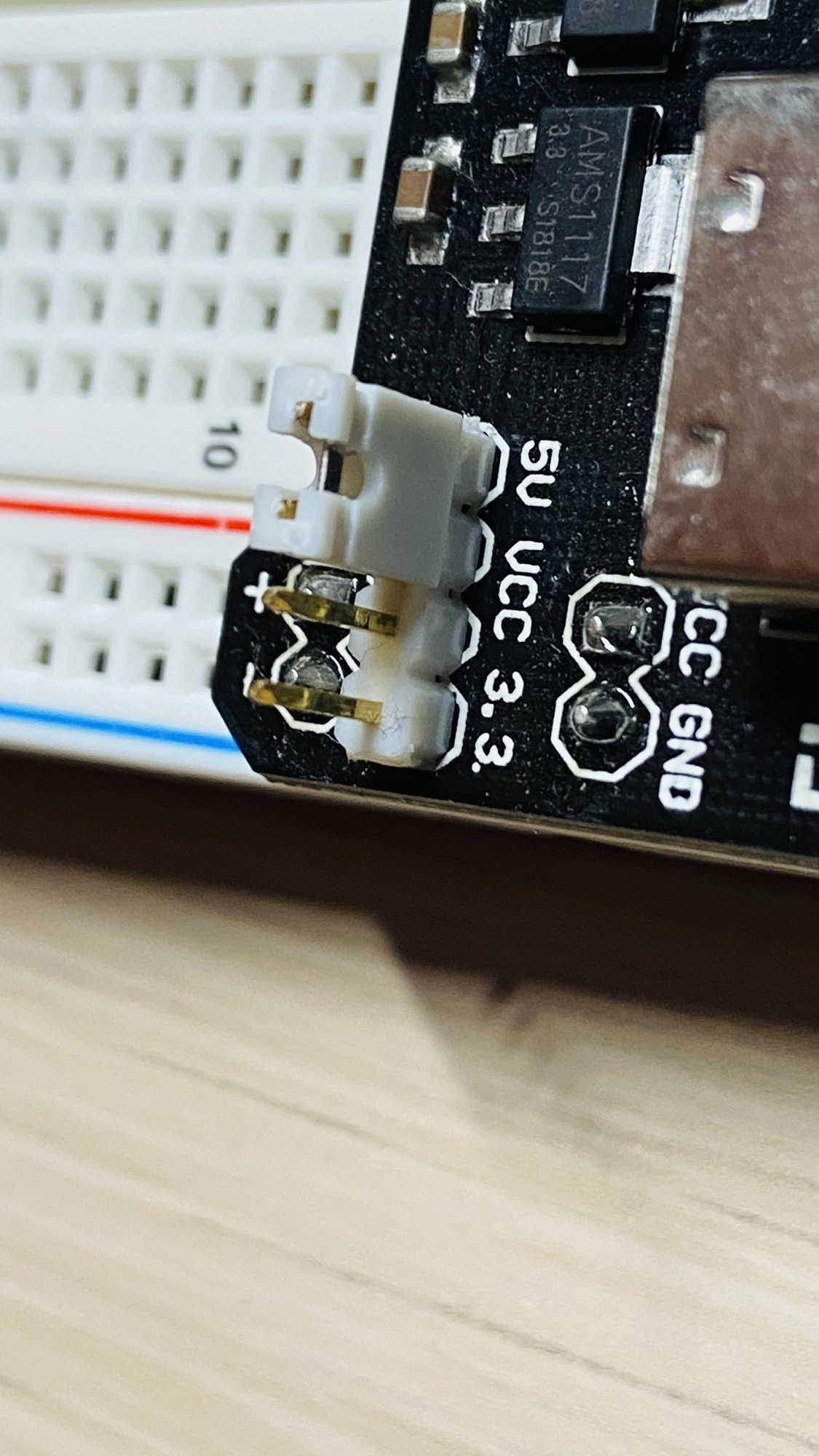Breadboard Power Supply Module
In some of my electronics tutorials I connect the circuit to a 9V battery, because it’s very simple to start with and it’s quite easy to find.
But it’s not optimal. First because the battery will drain over time, not delivering the 9V advertised.
A Breadboard Power Supply Module accepts an input through a barrel jack from a battery, a 12V adapter or any other source, and provides to our circuit a 5V or 3.3V tension, depending on our needs. We’re going to soon introduce Arduino into our circuits, and all our Arduino circuits will work with those voltage levels.
There are many different ones, here is the power supply module I want to show you, it’s part of the Elegoo kit I suggest you to buy, but also sold by other brands in this same shape and characteristics, you can search “Arduino power supply” on Amazon to see some alternatives:





The input voltage accepted is 6.5V - 9V DC. The maximum output current is 700mA.
We connect it to the breadboard directly:



Then on each side you can decide which tension you want to apply to the power lines in the breadboard, independently: 5V like in this case:

Or 3.3V, by changing the position of the jumpers:

You can also turn it off by positioning the jumpers in the middle:

Then you can connect to a 12V to 220V adapter using the barrel jack input:

Press the gray button to turn it on. The LED will turn on too:


The USB port is not there to power the power supply module. It’s there to power an USB Device if needed (like the Arduino, for example).
There are also other output pins on top that provide GND, 5V and 3.3V in case you need them:

download all my books for free
- javascript handbook
- typescript handbook
- css handbook
- node.js handbook
- astro handbook
- html handbook
- next.js pages router handbook
- alpine.js handbook
- htmx handbook
- react handbook
- sql handbook
- git cheat sheet
- laravel handbook
- express handbook
- swift handbook
- go handbook
- php handbook
- python handbook
- cli handbook
- c handbook
subscribe to my newsletter to get them
Terms: by subscribing to the newsletter you agree the following terms and conditions and privacy policy. The aim of the newsletter is to keep you up to date about new tutorials, new book releases or courses organized by Flavio. If you wish to unsubscribe from the newsletter, you can click the unsubscribe link that's present at the bottom of each email, anytime. I will not communicate/spread/publish or otherwise give away your address. Your email address is the only personal information collected, and it's only collected for the primary purpose of keeping you informed through the newsletter. It's stored in a secure server based in the EU. You can contact Flavio by emailing flavio@flaviocopes.com. These terms and conditions are governed by the laws in force in Italy and you unconditionally submit to the jurisdiction of the courts of Italy.